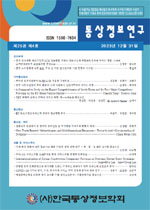우리나라 농식품 수출은 새로운 전환기를 맞이하고 있다. 오늘날 농업은 과거 농업의 개념에서 벗어나 6차 산업이며 국가의 중요산업으로 변화를 하고 있다. 본 연구는 우리나라 농식품 수출의 시장 다변화와 글로벌 거점 확대를 위해 선정된 신북방지역의 러시아를 비롯하여 중남미 지역의 브라질, 유럽연합 지역의 독일 그리고 기타지역의 호주를 대상으로 우리 농식품 수출결정요인을 분석하고 시장 다변화를 위한 수출전략국 선정에 대한 시사점을 제공하였다. 국제무역 분석에서 많이 사용되는 중력모형을 적용하여 2010년부터 2022년까지 우리 농식품 수출 총금액을 비롯한 수입국의 1인당 국민총생산, 교민자 수, 우리나라 수도와 분석대상국 수도까지의 거리, 물류성과지수, 한류를 변수화하여 분석하였다. 분석 결과를 바탕으로 연구시사점을 정리하면 우리나라 농식품 수출시장의 다변화를 위한 수출전략국 선정은 매우 적절한 것이며 우리 농식품 수출경쟁력 강화에 통계적으로도 유의미한 결과를 보여주었다. 향후 수출 확대를 위해 상품개발 및 수출지원정책 이외에 수출 인프라 개선, 문화 공감대 형성을 통한 수출 확대 방안이 적극 모색 될 필요성을 제시하였다.
Korea's agri-food exports are entering a new transition period. Today, agriculture is transforming from the concept of agriculture in the past into a sixth industry and an important industry in the country. This study analyzed the determinants of exports of Korean agri-food, targeting Russia in the Sinbuk Prevention region, Brazil in Latin America, Germany in the European Union, and Australia in other regions, which were selected to diversify the market for Korea's agri-food exports and expand its global base, and provided implications for the selection of export strategy countries for market diversification. Applying the gravity model, which is widely used in international trade analysis, the gross national product per capita, the number of Koreans, the distance to the capital of Korea and the capital of the country to be analyzed, the logistics performance index, and the Korean Wave were analyzed as variables. Based on the analysis results, the selection of export strategy countries to diversify Korea's agri-food export market is very appropriate, and statistically significant results were shown in strengthening the export competitiveness of Korea's agri-food. In order to expand exports in the future, it was suggested that in addition to product development and export support policies, measures to expand exports by improving export infrastructure and forming cultural consensus should be actively sought.
Ⅰ. 서론
Ⅱ. 이론적 고찰
Ⅲ. 연구모형설정 및 분석
Ⅳ. 요약 및 결론
참고문헌
